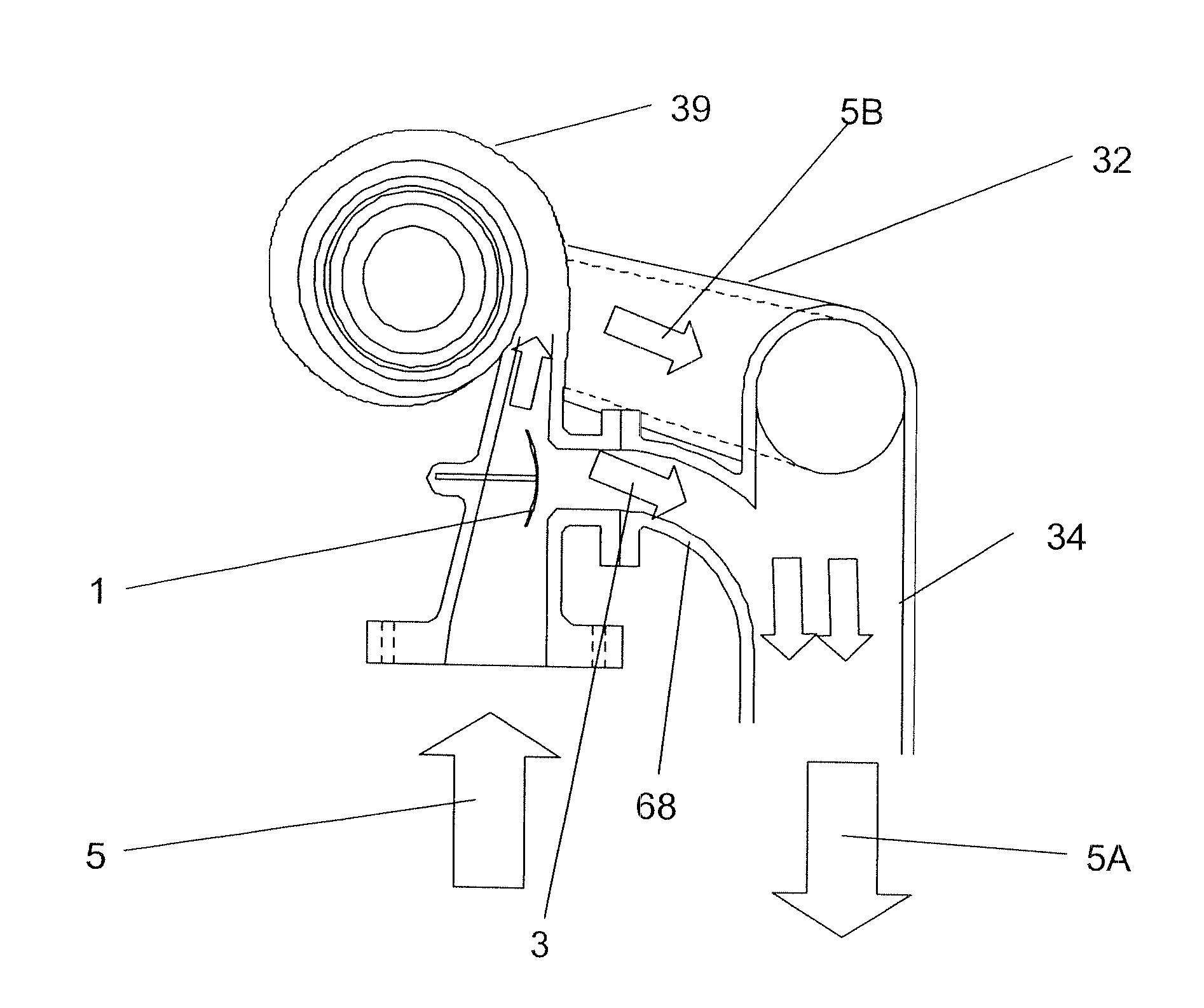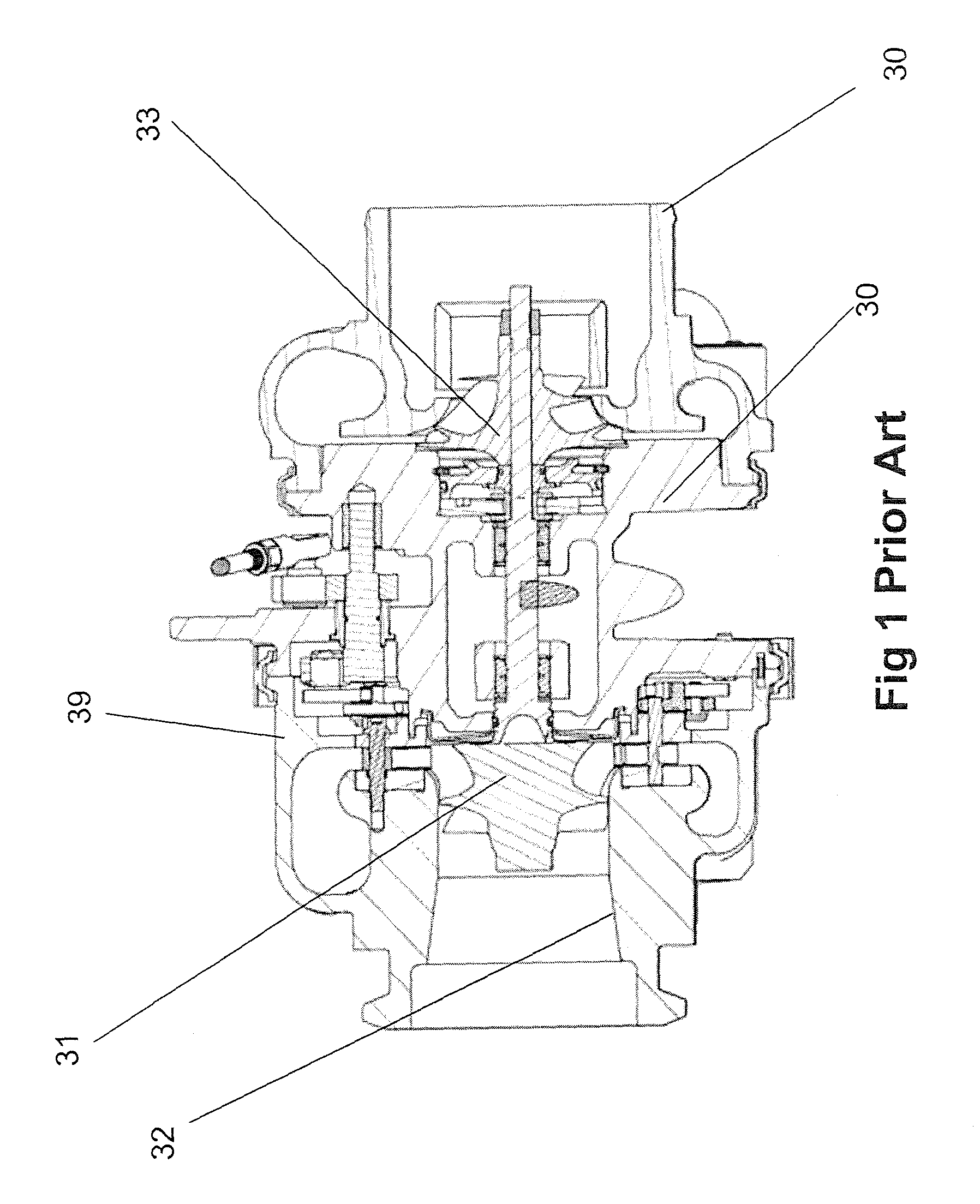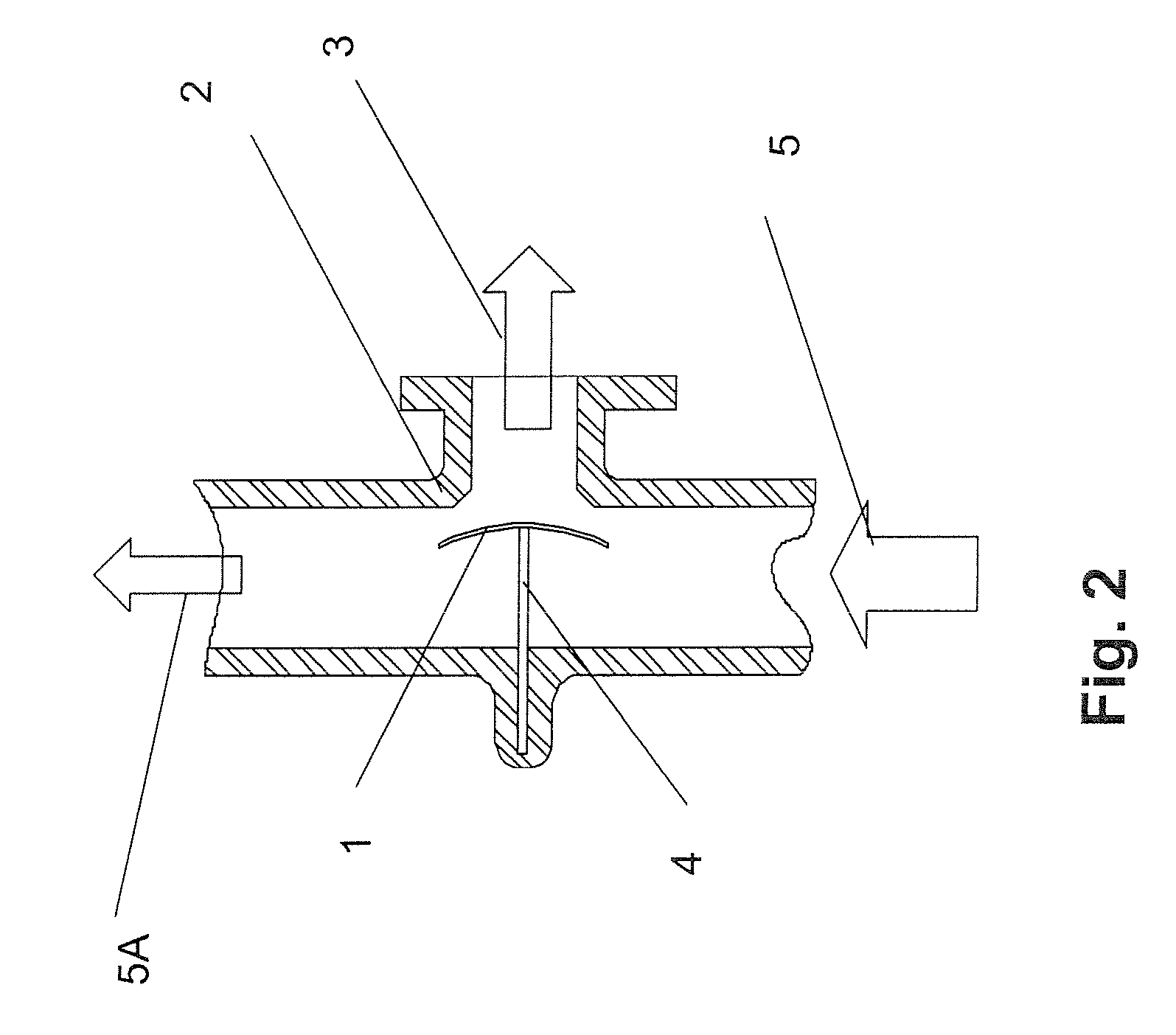Thermatically operated bypass valve for passive warmup control of aftertreatment device
a bypass valve and aftertreatment device technology, applied in the direction of valve operating means/release devices, functional valve types, machines/engines, etc., can solve the problems of deteriorating fuel efficiency, different, and complex diesel engine emissions, and achieve the effect of reducing the time of catalyst light o
- Summary
- Abstract
- Description
- Claims
- Application Information
AI Technical Summary
Benefits of technology
Problems solved by technology
Method used
Image
Examples
Embodiment Construction
[0061]On a turbocharged internal combustion engine the turbine housing includes a valve and a port, on the upstream side of the turbine wheel. The valve and port are fluidly coupled to the gas flow upstream of the turbine wheel. Said valve and port are in the closed, sealed, position while the engine is running at normal operating temperature, directing all the exhaust gas flow through the turbine wheel. The exhaust gas pressure provides pressure on the valve, to help in sealing, during normal engine operating conditions. However, at start up, when the engine is cold, the passive, bi-metallic valve distorts thermatically to an open position, thus allowing the pressure generated by the stationary, or slowly rotating, turbine wheel, to bias the exhaust flow through the valve and port to the low thermal inertia bypass system and thus pre-heat the after-treatment device(s), This has the effect of shortening the light-off period for the catalyst.
[0062]This valve is most preferably a bi-m...
PUM
 Login to View More
Login to View More Abstract
Description
Claims
Application Information
 Login to View More
Login to View More - R&D
- Intellectual Property
- Life Sciences
- Materials
- Tech Scout
- Unparalleled Data Quality
- Higher Quality Content
- 60% Fewer Hallucinations
Browse by: Latest US Patents, China's latest patents, Technical Efficacy Thesaurus, Application Domain, Technology Topic, Popular Technical Reports.
© 2025 PatSnap. All rights reserved.Legal|Privacy policy|Modern Slavery Act Transparency Statement|Sitemap|About US| Contact US: help@patsnap.com



